
China’s outbound investment soared all the way in last year, but declined by over 50 percent year on year since this year.
Chinese companies made non-financial outbound direct investment (ODI) worth 34.59 billion US dollars in more than 3,100 overseas enterprises in 145 countries and regions from January to May, according to the Ministry of Commerce (MOC). The investment amount dropped by 53 percent year on year. The ODI fell by 38.8 percent year on year to 8.22 billion US dollars in May.
Bai Ming, deputy director of International Market Research Institute with Chinese Academy of International Trade and Economic Cooperation, MOC, said in an interview with reporter from National Business Daily that there are two reasons for the rapid growth in China’s outbound investment. Firstly, it is related with China’s strategy of “going out”. Secondly, some enterprises export capitals by means like trade and investment. “The decline in investment currently should be treated objectively. I think that it results from investment getting back to be more rational.”
Decline in investment may continue in H2
Han Yong, commercial counselor of Department of Outward Investment and Economic Cooperation, MOC, remarked that the decline in foreign investment this year has something to do with guidance on irrational outbound investment. “Outbound investment lost by over 39 percent in last December, reflecting that enterprises were increasingly rational in investment and our guidance on outbound investment has taken effect.”
MOC’s data showed that Chinese domestic investors invested 170.1 billion US dollars of non-financial ODI in 7,961 overseas enterprises from 164 countries and regions all over the world in 2016, with investment amount up by 44.1 percent from a year earlier. The ODI recorded 8.41 billion US dollars in December, down by 39.4 percent when compared with that at the same period of 2015.
The outbound investment keeps declining by over 30 percent since January of 2017 and posted a decrease of as high as 48.8 percent in the first quarter of this year. Although the decline is expanding, investment in fields such as commercial service industry, infrastructure construction and information technology service is still climbing.
Due to depreciation of yuan in 2016, many enterprises are inclined to make overseas investment, said Liu Xuezhi, senior researcher from financial research center at Bank of Communications.
“On the one hand, there’s obvious sign of China’s economic recovery and pressure in capital outflow weakens. On the other hand, the country’s management over capital liquidity is improved, leading to reduction in investment amount. This situation may continue to the second half of the year,” Liu added.
It is learnt that in December of 2016, the National Development and Reform Commission, the MOC, the People’s Bank of China and State Administration of Foreign Exchange proposed to strengthen regulation on outbound investment and keep close eyes on enterprises’ intention in making irrational outbound investment. They suggested that enterprises should make prudential decisions due to hidden risks in some outbound investment. Relevant departments clearly point out that there’re greater potential risks in investment in real estate, hotels, entertainment industry, and sports clubs.
Investment in infrastructure construction pushes architecture industry
In terms of industry structure, outbound investment was mainly made in commercial service industry, manufacturing, and information transmission as well as software and information technology service industries during January and May this year, with investment in these three areas accounting for 26.7 percent, 19.1 percent and 12.7 percent among total outbound investment respectively, data from the MOC showed.
Noticeably, investment in architecture industry hiked by 88.8 percent year on year, and that in information transmission, software and information technology service industries gained by 45.8 percent year on year.
In the opinion of Liu, the rapid growth in investment in architecture industry is contributed by the large investment in infrastructure construction since this year. “Infrastructure construction cannot do without architecture industry and will greatly drive the development of the latter. In addition, growth in real estate development investment picked up in the first quarter, which may boost investment in architecture industry to some extent.”
A manager surnamed Chen from Beijing told the reporter that Chinese enterprises entering overseas market by collaboration has become a feature of infrastructure construction, which reduces risks but also makes them gain financing support. “At present, we coordinate with a domestic builder to undertake cinema construction project in Indonesia.”
“Due to the Belt and Road Initiative, investors are very passionate in investing in infrastructure construction. We provide modulation mobile work shed for various architecture construction. Our business volume actually surge significantly,” said Chen.
According to statistics from China International Contractors Association (CHINCA), Chinese enterprises signed 2,128 contracts of contracting foreign projects with 61 countries along the Belt and Road Initiative route during January and May 2017. The amount involved in the newly-signed contracts amounted to 38.47 billion US dollars, accounting for 51 percent of the total contract amount of contracting foreign projects of China at the same period. The turnover registered 24 billion US dollars, accounting for 47.6 percent of total turnover at the same period and representing a year-on-year increase of 6.7 percent.
CHINCA’s chairman Pang Qiuchen said that “infrastructure interconnection will be a priority of development of the Belt and Road Initiative in the future. Cooperation will be mainly conducted in the fields, which we called infrastructure fields, including electric power engineering, traffic construction, house building, industrial construction, and manufacturing and processing equipment.”
Translated by Vanessa Chen
















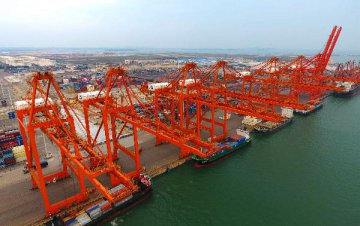

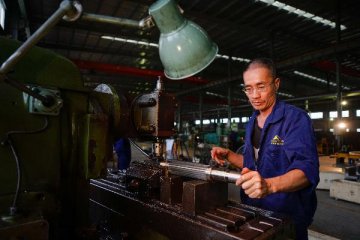
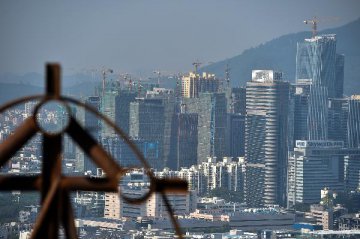
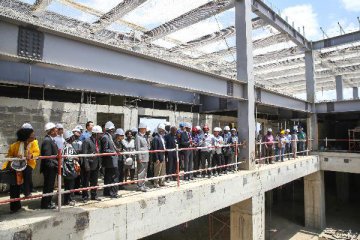
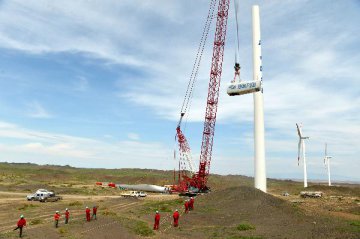


Latest comments